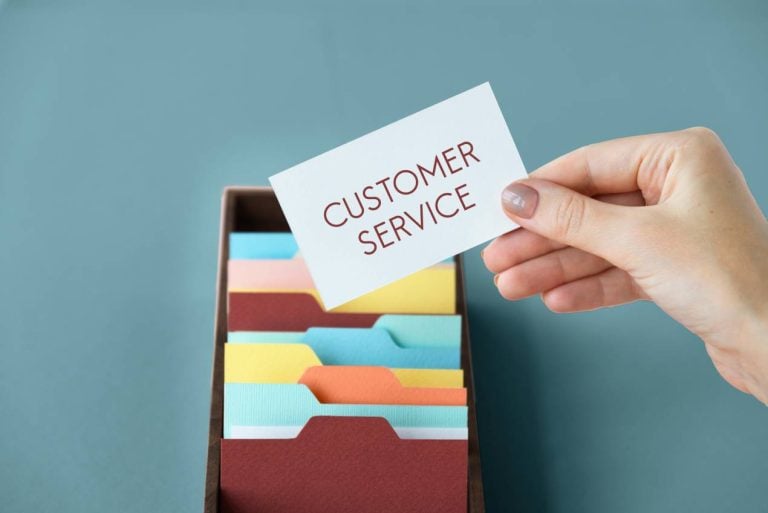Customer complaints occur when there’s a gap between what a business promises and what customers actually experience.
This happens when customers perceive a brand differently from their actual service encounters.
Customer complaints, though unavoidable, can actually be valuable opportunities for smart businesses. Regardless of how hard you work or how excellent your products are, it’s impossible to satisfy every customer all the time, especially as an online business owner.
Considering the impact of the internet and social media on consumers’ purchasing decisions, it’s vital to address customer complaints promptly and effectively. Preventing disputes from escalating and tarnishing your business’s reputation is essential.
Dealing with customer complaints can be challenging due to the unpredictability of human emotions. In this article, we’ll explore strategies to help achieve positive outcomes for both your business and your customers when handling complaints.
Are Customer Complaints Good for Your Business?
Understanding and appreciating customer complaints is a crucial step in elevating your company’s performance. By effectively utilizing customer feedback tools and mastering the art of handling such input, complaints can be transformed into valuable opportunities for both your team and business growth.
Here are some key benefits of embracing customer complaints:
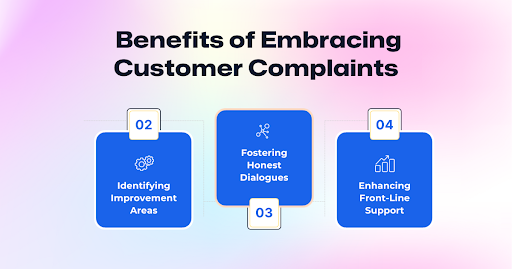
- Identifying Improvement Areas: Complaints serve as beacons, highlighting specific aspects of your products or services that require enhancement.
- Fostering Honest Dialogues: Customer complaints create openings for candid discussions between your team and customers. These conversations can make customers feel like indispensable contributors to your success.
- Enhancing Front-Line Support: Complaints offer valuable insights into the effectiveness of your front-line support staff. They can serve as invaluable training resources for new team members, helping improve their skills.
5 Principles to Abide by When Handling Customer Complaints

Your ecommerce website relies on its customers for survival. Disregarding dissatisfied customers isn’t an option, as their negative experiences can easily harm your reputation and drive existing clients to your competitors.
To prevent such a situation, it’s essential to understand how to properly address customer complaints. Here are five fundamental principles for handling customer feedback
1. Always Respond with Politeness and Promptness
No matter how harshly a customer criticizes your business, resist the urge to engage in a verbal duel. Remember the age-old wisdom that “the customer is always right.” This adage still holds true in today’s digital age.
Consider every complaint, no matter how it’s presented, as a hidden opportunity. It’s a chance to uncover overlooked details and demonstrate your dedication to improvement. Each complaint, no matter its form, should be seen as a blessing in disguise.
Rather than ignoring complaints, respond promptly with courtesy, and actively work toward resolving the issue.
2. Apologize and Resolve the Issue
When confronted with negative feedback, don’t rush to delete or send private messages behind closed doors. Instead, embrace the complaint and show genuine concern. For instance, you might say, “We deeply regret your negative experience. We understand how it affected you. Rest assured, we’re addressing the issue promptly. We’ve sent you a private message to discuss potential solutions.”
Remember, merely apologizing won’t suffice; commit to finding a resolution, regardless of the challenge it presents.
3. Never Delete Complaints
Deleting complaints on social media or forums sends a negative message to your audience. It conveys indifference and implies that your company doesn’t care about customer experiences. If you were on the receiving end, you’d likely feel disregarded and share your frustration with others.
Deleting complaints doesn’t make them disappear. In fact, it can fuel further discontent and jeopardize your reputation. It contradicts the principles of excellent customer service and invites trouble.
4. Provide Transparency When Transferring Messages
Think back to frustrating customer service experiences where you were endlessly transferred from one representative to another. To avoid subjecting your customers to this frustration, explain that a specialist or the relevant person will handle the conversation, ensuring a more efficient resolution.
This demonstrates your commitment to addressing their concerns effectively.
However, aim to minimize such transfers whenever possible, whether it’s calls, tickets, emails, or private messages.
5. Utilize Exceptional Customer Support Tools
Using top-tier customer support tools is vital to streamline your customer service processes and enhance the overall experience. These tools can include customer relationship management (CRM) systems, helpdesk software, chatbots, and analytics platforms.
We have covered a section on how ThriveDesk, a customer support software, can you help you better manage your customer complaints and queries.
Incorporating these tools into your customer service strategy will help you stay organized, responsive, and better equipped to meet your customers’ needs.
7 Most Common Customer Complaints and How to tackle them
1. Product Out of Stock
Customer Approach: When customers encounter the “Product Out of Stock” situation, they often express disappointment. They might express their frustration or ask about the restocking timeline. This complaint typically arises because customers are eagerly seeking a specific product, and its unavailability can be frustrating, particularly if it’s in high demand.
Reasons Behind the Complaint: Customers may face this issue due to high product demand, inventory management challenges, or popular promotions. This complaint can also occur when customers have seen marketing materials or reviews for a product, creating a strong desire to purchase it.
Customer Service Strategy:
- Empathize with the customer’s disappointment.
- Offer alternatives, such as related products or backorder options.
- Provide restocking information if available.
- Encourage them to sign up for notifications when the product is back in stock.
- Consider offering a discount or coupon code as a goodwill gesture (Optional).
How to tackle a “Product out of Stock” complaint:
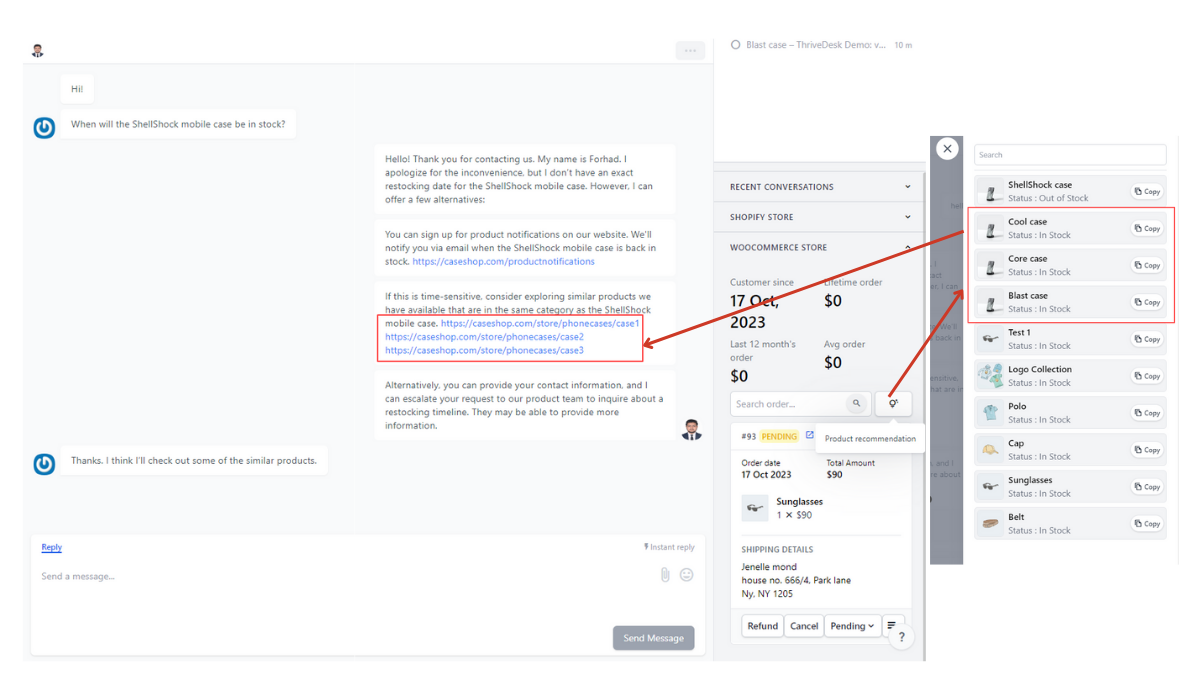
Customers come to live chat because they are looking for quick fixes to their issues. As you can see from this conversation between a customer and agent, the agent in his first few messages lays out all the options available to the customer and helps the customer make a quick decision.
With ThriveDesks, your customer agent can view the page your customer is browsing on your website, get their order history and share alternative product recommendations without ever having to leave the inbox. What does this mean for you? Lightning fast customer support!
2. Payment Method Preferences
Customer Approach: Customers who prefer a particular payment method might express their frustration when it’s not available. They might expect seamless payment processes and become irritated if their preferred option isn’t provided.
Reasons Behind the Complaint: This complaint arises due to the variety of payment methods available, with different customers having different preferences. Frustration can stem from limited payment options or lack of compatibility with a customer’s primary payment method.
Customer Service Strategy:
- Apologize for any inconvenience.
- Explain the available payment methods.
- Offer assistance or information on alternative payment options.
- If feasible, consider adding the requested payment method.
How to tackle a “Payment Method Preference” complaint:
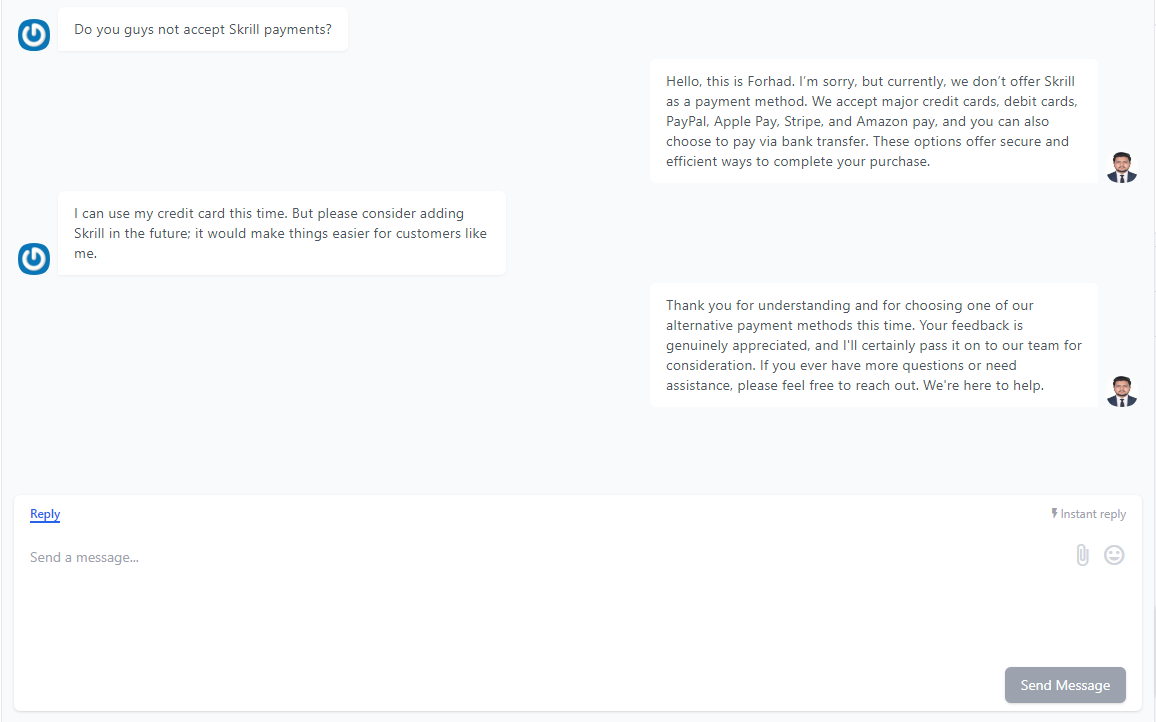
The key component of providing customer support over live chat is speed. You need to be fast and concise. The customer will appreciate you for it because they aren’t looking for a drawn out conversation. They want quick actionable answers that will help them fix the issue they are facing.
In this conversation, The agent begins with empathizing with the customer and then apologizing. He follows it up with a brief but clear explanation of why their preferred payment method isn’t available and offers them alternatives that are equally secure that they can use.
The customer picked an alternative and stressed that they should add their preferred payment method, to which the agent provided assurance that their suggestion will be taken seriously.
3. Delayed or Missing Orders
Customer Approach: Customers may become anxious or angry when their orders are delayed or go missing. They expect timely order fulfillment and become concerned when it doesn’t occur as anticipated.
Reasons Behind the Complaint: Delays or missing orders can result from various factors, including logistical issues, high order volumes, or courier problems. Customers expect to receive their purchases on time, and any deviation from this expectation can lead to complaints.
Customer Service Strategy:
- Provide an immediate response and apologize for the delay.
- Investigate the issue and track the order’s status.
- Offer a clear timeline for resolution.
- Consider expedited shipping or a discount on their next purchase.
- Keep customers updated on the progress.
How to tackle a “Delayed or Missing Orders” complaint:
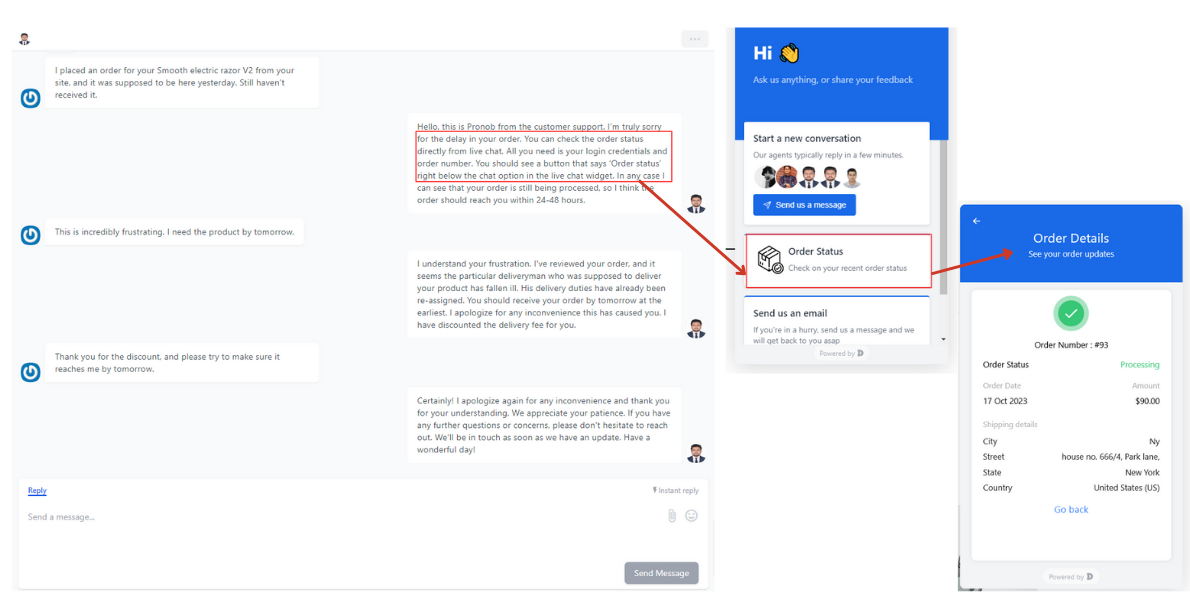
Customers are usually frustrated and angry when their products don’t arrive at the scheduled time. Maintaining this schedule should be the utmost priority for businesses but in reality this happens more than often. The first thing the agent needs to do in this scenario is respond fast. The longer you make the customer wait the angrier they will get.
A quick response can start you off on the right foot. Then, as you can see, the agent acknowledges the customers frustration and immediately goes into troubleshooting mode. On ThriveDesk, your customer can directly check their order status from the live chat window. All they need is the email they ordered with and their order number.
The agent here informs the customer of this feature but helps with the delayed order regardless. Remember, the customer is angry. While it’s good that the agent provided helpful information, they also recognized that they also need to calm and satisfy the customer. The agent does this by directly discounting the delivery fee which given the situation was the fair thing to do,
The customer calmed down and even thanked the agent for the discount. Customers remember these kinds of positive experiences and for your business they can be the key factor in establishing a loyal and long lasting customer base.
4. Product Didn’t Meet Expectations
Customer Approach: When customers feel a product didn’t meet their expectations, they might express their disappointment. They could provide negative feedback and ask for solutions like returns or exchanges.
Reasons Behind the Complaint: This complaint may arise when product descriptions, images, or marketing materials create expectations that don’t align with the actual product. It can also be due to product defects or customers simply not being satisfied with the quality or features.
Customer Service Strategy:
- Acknowledge their concerns and apologize for the disappointment.
- Offer a return or exchange process.
- Share any available product guides, reviews, or tutorials.
- Provide alternative product recommendations.
- Use the feedback to improve product descriptions and quality.
How to tackle a “Product Didn’t Meet Expectations” complaint:
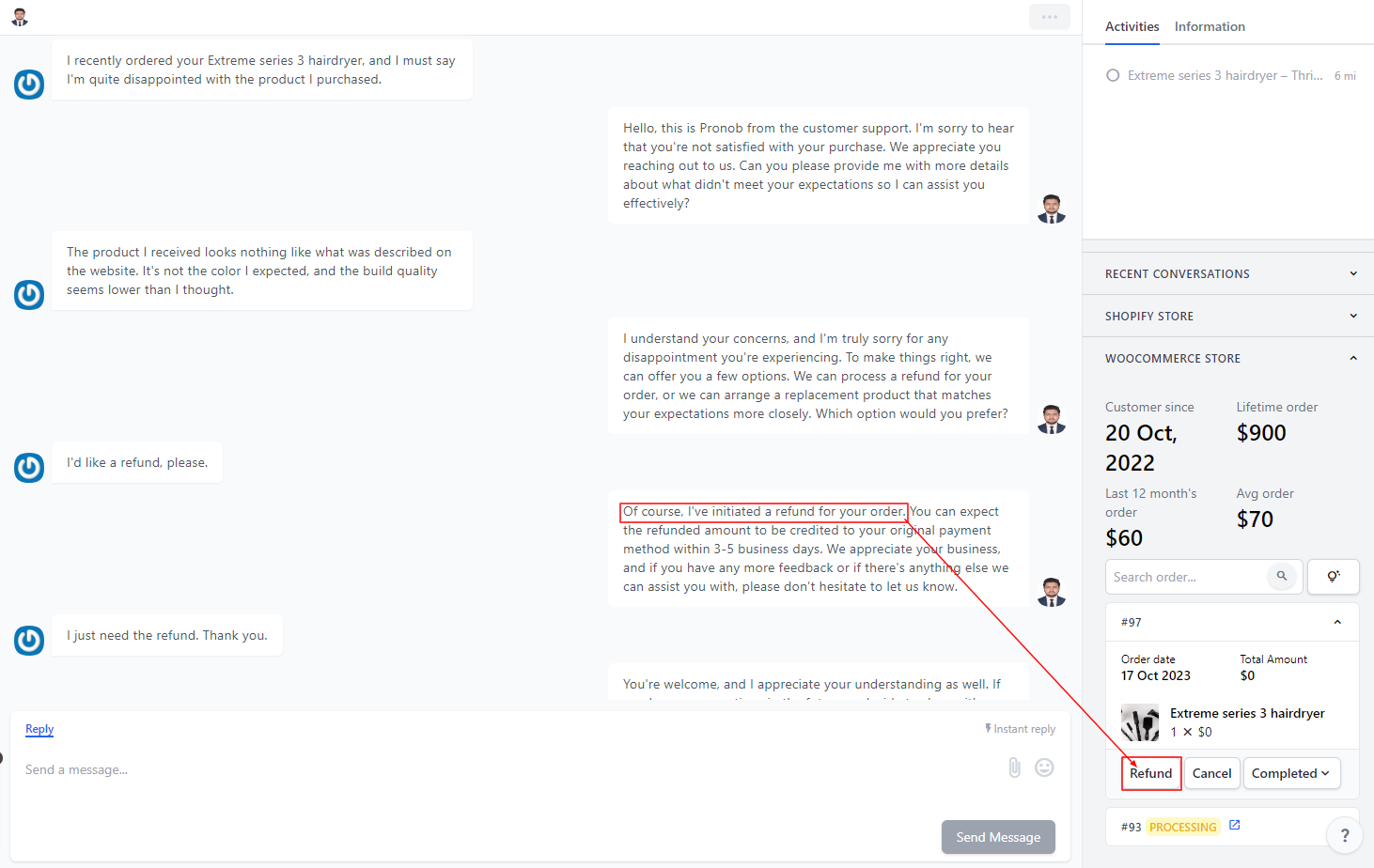
In e-commerce, there are a host of reasons for a product not meeting a customers expectations. They might not have done due research before purchase, the product could’ve arrived with a defect or the product simply fails to fill the exact need the customer purchased it for. The reasons can be many.
In the event of such an issue it is essential that the agent pinpoint exactly what deterred the customer. Is it a one-off product defect or an overall design issue. As you can see in the scenario above. The agent first apologizes for any inconvenience caused and then asks the customer a direct question about what part of the product failed to deliver on expectations.
It helps businesses to always give their customers an exit strategy. Give the customer the option of returning the product or offer a replacement product if the initial one was faulty. The point is to give the customer the sense that there is nothing they can lose and with ThriveDesk, instant refunds are just easy. Your agent can refund the customer directly from the support dashboard with just a few clicks.
This sense of security for the customer can work wonders and even override things such as faulty products. This can ensure that the customer comes back even if they have a bad experience with the product. Good customer service can be a very powerful tool for businesses to drive customer likeability.
5. Difficulties with Returns
Customer Approach: Customers facing difficulties with returns may express frustration if the return process is complex or unclear. They might seek guidance and assurance for a smooth return experience.
Reasons Behind the Complaint: Complex return processes, unclear return policies, or insufficient return support can lead to customer dissatisfaction. Customers expect hassle-free return options when making a purchase, and difficulties in this area can result in complaints.
Customer Service Strategy:
- Simplify the return process with clear instructions.
- Offer a prepaid return label, if possible.
- Provide assistance via email or chat to guide the customer through the process.
- Keep the customer informed about return status and refund processing.
- Consider adding a comprehensive return policy to the website.
How to tackle a “Difficulties with Returns” complaint:
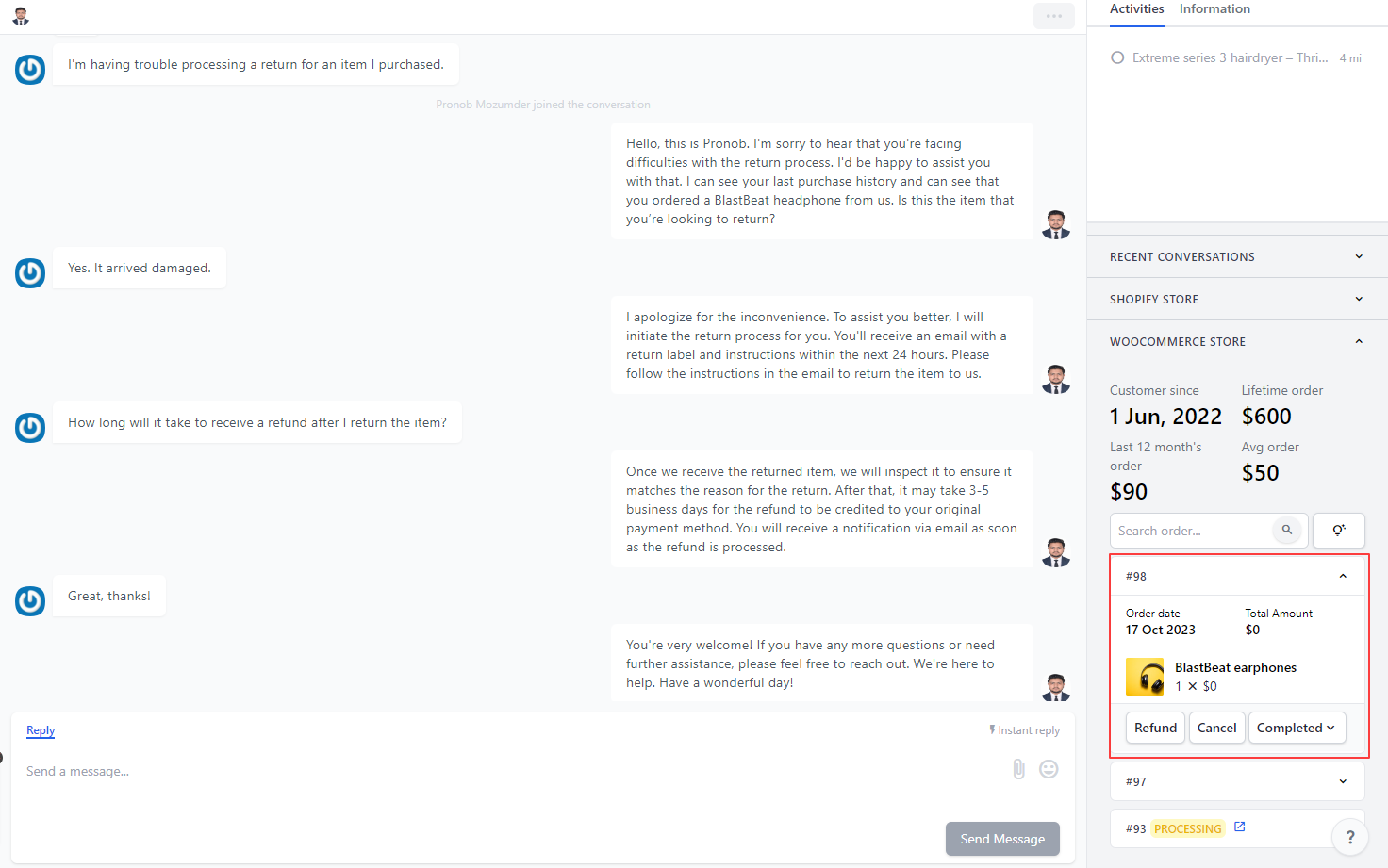
The keyword when trying to serve a customer trying to return a product is: Simplicity. The return process should be as simple and as less convoluted as possible. Here, it took the agent just 2 messages to acknowledge, collect information and advise the customer on how to go about returning a product.
People lead busy lives. No one wants to sit and chat with customer service for hours jumping through unnecessary hoops to return a product. The process should be simple, should have few steps and clear instructions and it’s the agents duty to clearly convey these instructions as efficiently as possible.
6. Not Loading Properly on Mobile
Customer Approach: Customers experiencing mobile display issues can express frustration with the website’s performance on their mobile devices. They typically expect seamless browsing and transaction experiences.
Reasons Behind the Complaint: This complaint often arises when websites are not optimized for mobile use, leading to navigation difficulties, slow loading, or display issues. The growth of mobile device usage has heightened customer expectations for a responsive and user-friendly mobile experience.
Customer Service Strategy:
- Thank the customer for highlighting the issue.
- Investigate the problem and ask necessary questions about their device or browser.
- Provide simple solutions that lead to quick fixes.
- Notify the development team about the issue (If it’s not a caching or browser issue).
How to tackle a “Not Loading Properly on Mobile” complaint:
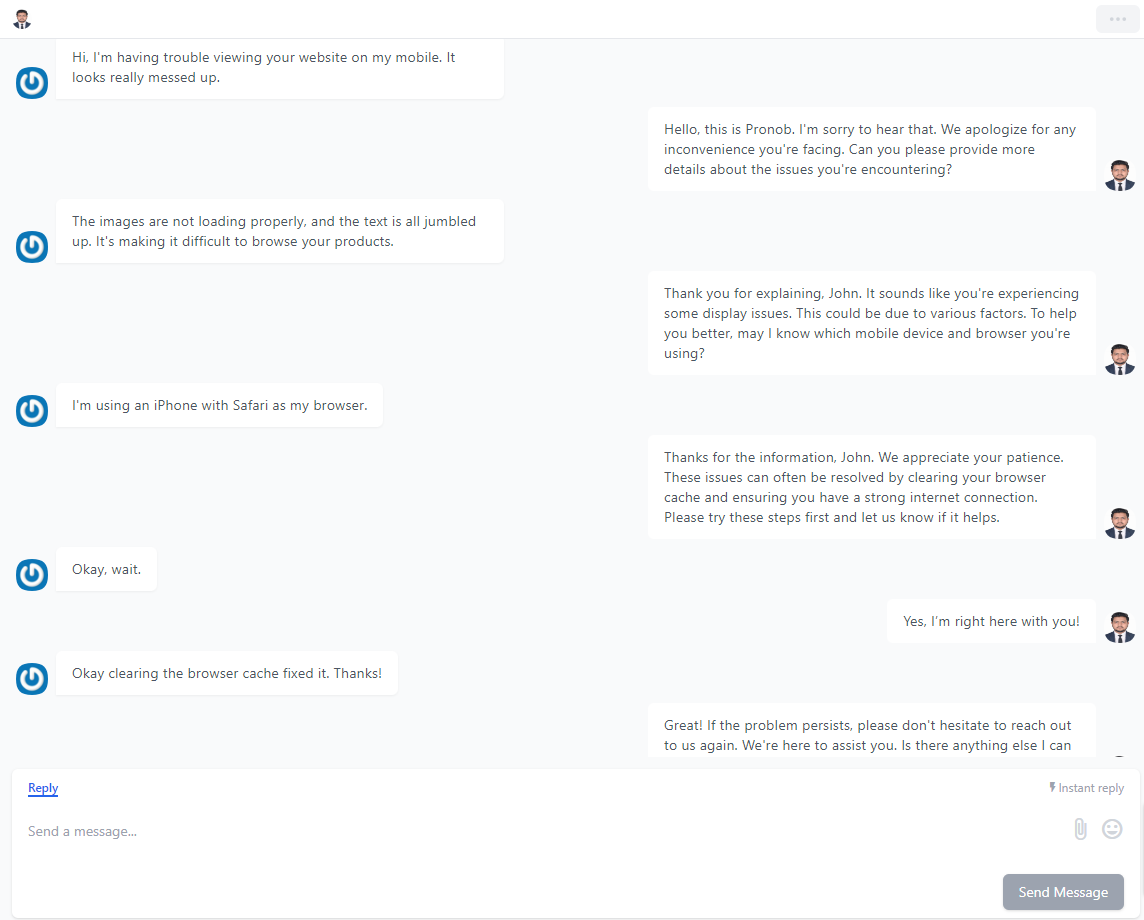
In these situations, the agents job is to isolate very quickly what the underlying issue is. The most common reason for images or elements not loading on the mobile version of a page can often be attributed to caching issues on the device the customer is using.
Here the agent directly asks for the type of mobile device and the browser to pinpoint the issue more accurately.
As predicted, after knowing the device and browser the customer was using, the agent went with the fastest fix to the situation i.e clearing browser cache. 70% to 80% of the time clearing the browser cache fixes all issues.
Simple and fast customer service is probably the most powerful form of service. As mentioned before, customers don’t want to spend any substantial amount of time going back and forth with a customer service agent over live chat but if they can receive a solution to their situation instantly, within a few messages this positive interaction will stick with them.
Quick and efficient customer support is the best kind of customer support!
7. Dissatisfaction with Customer Service
Customer Approach: Customers who are dissatisfied with previous customer service interactions may express their displeasure with the service quality. They may seek resolutions, improvements, or compensation.
Reasons Behind the Complaint: Dissatisfaction with customer service can occur when customers feel their issues were not resolved, or when interactions were impersonal, unhelpful, or slow. Customers expect prompt, respectful, and effective support, and deviations from these expectations can result in complaints.
Customer Service Strategy:
- Acknowledge the customer’s frustration.
- Investigate their previous interactions to understand the problem.
- Apologize for any inconvenience caused.
- Ensure the issue is resolved promptly and professionally.
- Offer an incentive or discount for future purchases to restore goodwill.
How to tackle a “ Dissatisfaction with Customer Service” complaint:
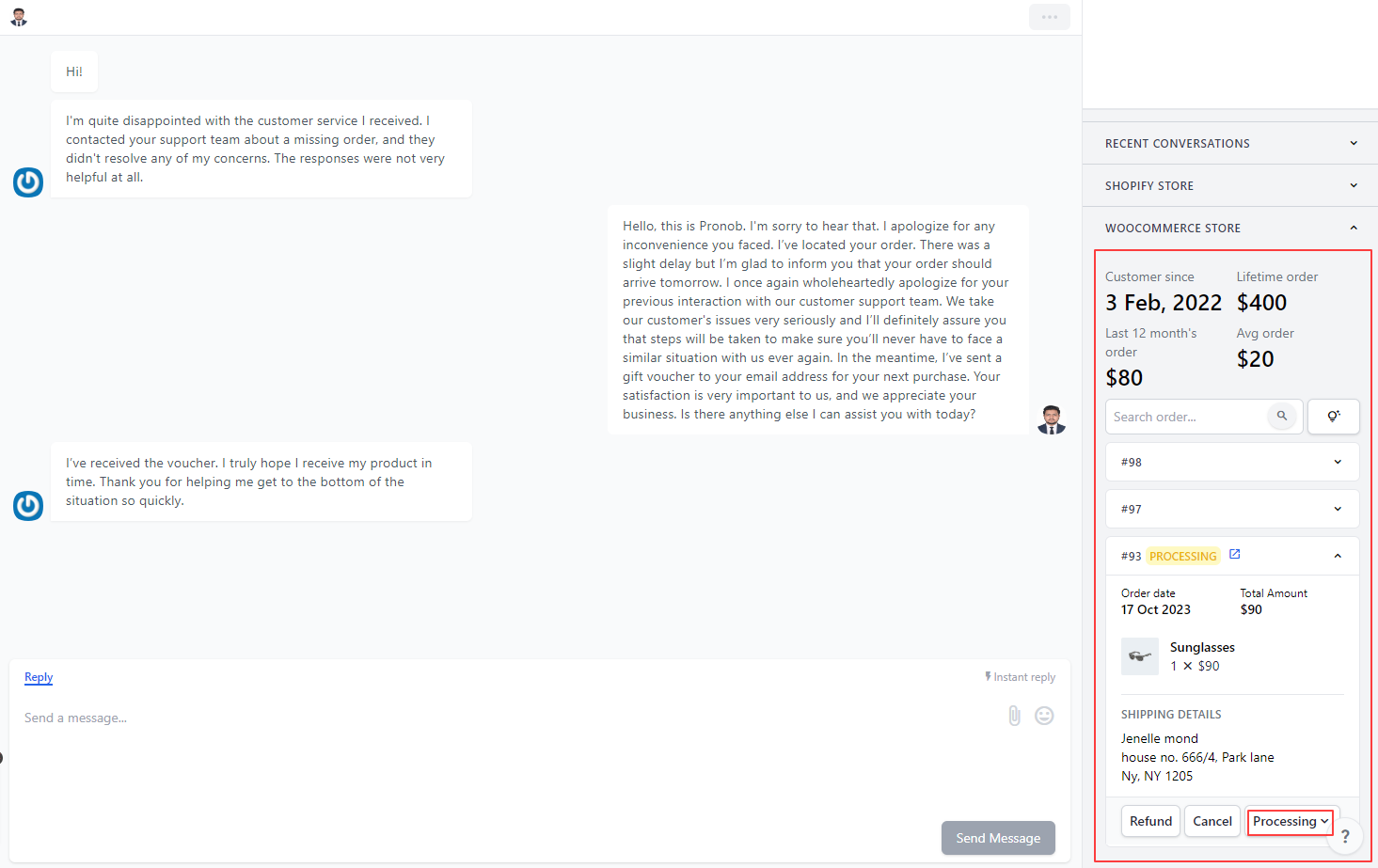
This one’s the most crucial issue that should be dealt with extreme care as bad customer service can destroy your business. Here, the customer was angry that they received bad support and that their issue remained unsolved.
One bad experience is enough for a business to lose a customer forever. However, in this scenario the customer reached out again and this time the agent jumped into action. In one message the agent provided information on the customers missing order, apologized for the bad service prior and sent the customer a gift voucher to offset that negative experience.
As a result, you can see the customers tone softened and even thanked the agent for the gift voucher. Unfortunately, not all customers will be as forgiving so it’s very important that you train your customer service agents well and that this kind of situation never happens. Things like this can ruin a company’s reputation.
Wrapping Up
When you consistently go the extra mile for your customers, you’ll see a remarkable boost in customer loyalty.
How you handle customer complaints can make or break their loyalty. Treat them with kindness and strive to find solutions to their problems.
Complaints are a part of business, but changing how you view them can be a game-changer. Successfully resolving complaints can lead to long-lasting customer relationships and keep them coming back to your online store.



